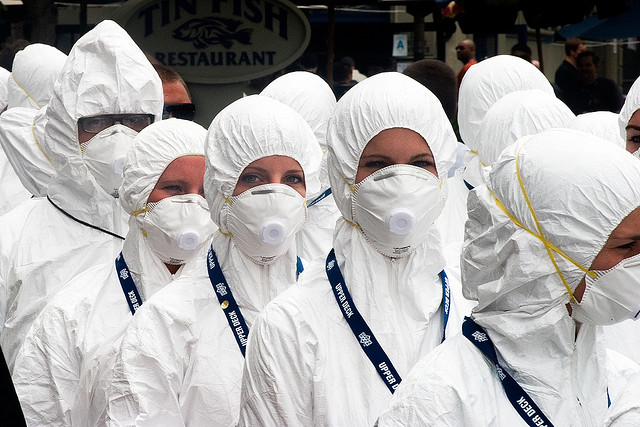U.S. & Europe are Hotspots for Deadly Emerging Diseases
“A hot virus from the rainforest lives within a 24 hour plane flight from every city on earth,” Richard Preston wrote in The Hot Zone. It turns out, however, that the places most likely to usher in the next deadly outbreak are in fact the cities of the United States and Western Europe.
At least this was the conclusion drawn by the International Livestock Research Institute, whose scientists analyzed around 1,000 disease surveys covering 10 million people and 6 million animals around the world.
Nature describes the report’s conclusions:
The new report includes data up to 2012, finding an additional 30 disease reports both before and since 2004. It shows that the United States, the United Kingdom and Australia are the key hotspots for emerging zoonotic diseases.
Though poor populations in developing countries by far still bear the brunt of the majority of zoonotic – or animal-derived – diseases, it seems the emerging disease outbreaks of the near future are projected for the developed West. Why this is, however, remains unclear.
It is unclear why endemic diseases and emerging diseases follow different geographical patterns, says Grace, a finding that conflicts with the idea held by many scientists that the crucible of disease emergence is biodiversity hotspots, which tend to be found in developing countries.
“We don’t know why this is. It could be reporting and detection bias,” she says. Patchy surveillance and under-reporting is a huge problem in developing countries, where farmers fear they will lose their livestock without receiving compensation if they report cases of disease.
The World Organization for Animal Health (OIE) wants to set up a compensation program for farmers with sick livestock in developing countries in the hope that this would encourage them to turn in animals carrying the next SARS or HIV before the disease could spread to humans.
The OIE is pushing for the World Bank to establish a fund to compensate poor farmers in the case of large-scale disease outbreaks, says Vallat. “It is for the global public good to have a worldwide reporting network that extends into remote areas,” he says. “The cost of late detection rises exponentially, but it is not a priority for donors.”
Perhaps those donors would be more convinced if they were first made to read a Preston novel.
More from Smithsonian.com:
/https://tf-cmsv2-smithsonianmag-media.s3.amazonaws.com/accounts/headshot/Rachel-Nuwer-240.jpg)

/https://tf-cmsv2-smithsonianmag-media.s3.amazonaws.com/accounts/headshot/Rachel-Nuwer-240.jpg)